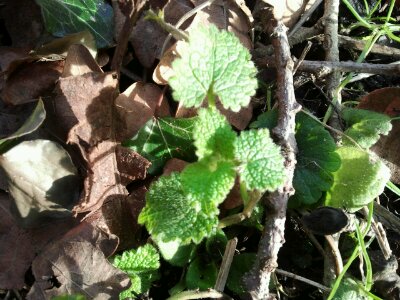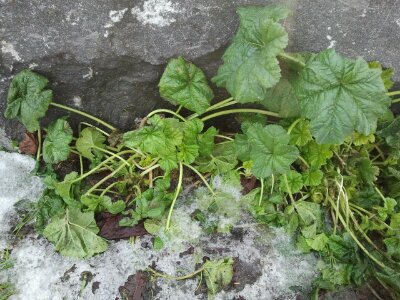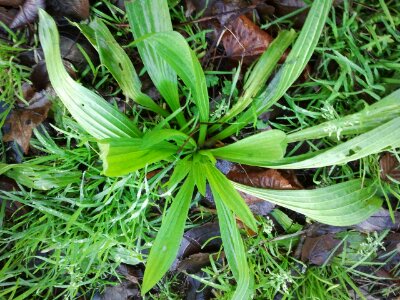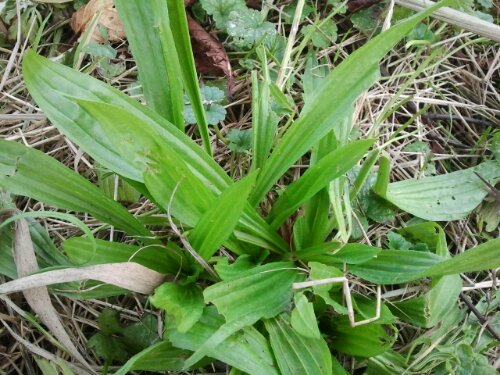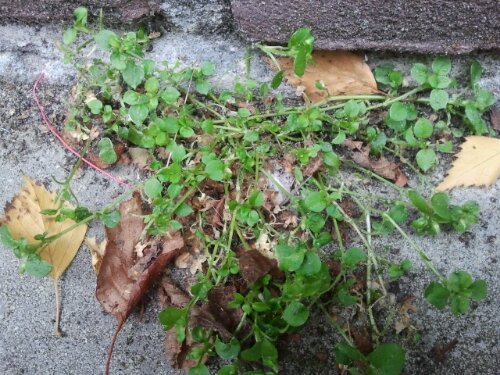
This photo shows the narrow form of Plantain, known as Ribwort, with Ground ivy flower stems growing up through it.
Ribwort (Plantago lanceolata), is a very useful first aid herb. It is part of the plant family to which Psyllium belongs and shares it’s usefulness as a soother of mucous membranes. Amongst other things, it can be used as a simple insert in shoes, to ease tired aching feet and can be rubbed on grazes and insect stings as it releives pain. It was previously recommended as a plant to be added to the seedmix for pastureland, it is a favorite of sheep. Ribwort contains lots of mucilage, easily released by chewing. For more simple uses see Susun Weed link.
Ground ivy (Glechoma hederacea) also known as groundsel or cat’s paw, was an age old remedy for stomach ailments, was used to clarify beer in the absence of hops, is useful for soothing chapped hands, tastes pungent and minty and is great raw or cooked. It is a favorite of birds and can apparently entice a rabbit to eat when is unwell and refuses all other food. Mrs Grieve’s Modern Herbal (from 1931) advises harvesting Groundsel along with Chickweed in the spring and summer, to dry and then feed to rabbits along with their straw in the winter.
The plant is a very successful annual, now renowned as a garden weed. Ground ivy, with its scalloped kidney shaped leaves, creeps across the ground, setting root at regular intervals and throwing up relatively tall flower stems (10 -20cm high) at this time of year. Today, purple ground ivy flowers looked stunning throughout the park. There are striking patches at the entrance closest to the garden centre and dotted throughout the less trampled grassland, notably next to the woodland area beside Frankendael Huis. This plant is definitely a must-try for foragers, provided you can find clean plants.
 Lastly today, a photo of Marjoram (Origanum vulgare) which thrives in just a couple of spots in the park. I am always delighted when I see it in flower but at this time of year the plants are growing rapidly and the leaves are loaded with the aromatic oils, so prized by cooks.
Lastly today, a photo of Marjoram (Origanum vulgare) which thrives in just a couple of spots in the park. I am always delighted when I see it in flower but at this time of year the plants are growing rapidly and the leaves are loaded with the aromatic oils, so prized by cooks.


